Maharashtra’s crown jewel, Kolhapur, pulsates with the rich cultural heartbeat of the state. From its mouthwatering cuisine and vibrant traditions to its legacy of royalty, this city beckons you to explore its historical depths and immerse yourself in authentic experiences.
Kolhapur’s story stretches back centuries, whispering tales of a time when it was a princely state governed by the renowned Bhosale dynasty. Their influence is woven into the very fabric of the city, from its architectural marvels to its delectable cuisine and time-honored traditions.
How to reach:
Taking Flight:
While Kolhapur Airport (KLH) offers limited connections, it’s worth checking for direct flights. Alternatively, well-connected airports in Pune (PNQ) and Goa (GOI) offer more options. From either city, a comfortable 3-5 hour journey by taxi or bus awaits, depending on your chosen mode of transport and traffic.
Train Travel:
Kolhapur boasts excellent rail connectivity to major hubs like Mumbai, Pune, Bangalore, and Hyderabad. Kolhapur Railway Station (KOP) sits conveniently in the city center, making arrival a breeze. Explore Indian Railways’ website or app to find schedules, check availability, and book your train tickets.
Road Trip:
Kolhapur welcomes you by road from various cities and towns in Maharashtra and neighboring states. National Highway NH4 serves as a major artery, connecting you to Mumbai, Pune, Bangalore, and beyond. State-run and private buses offer frequent connections to major cities like Pune, Mumbai, Goa, and Belgaum. Craving a personalized adventure? Hire a taxi or get behind the wheel and enjoy scenic drives along the way.
Exploring the City:
Once in Kolhapur, navigate the city with ease using readily available auto-rickshaws or taxis for short trips and sightseeing. Many tourists opt for the freedom of renting motorcycles or bicycles, allowing them to explore the city at their own pace.
Best time to visit:
Winter Wonderland (November to February):
Escape the scorching sun and embrace Kolhapur in its winter glory. This is widely considered the prime time to visit, with cool and comfortable weather (15°C to 30°C) ideal for exploring historical sites, temples, and bustling markets. Daytime sightseeing is a pleasure, and evenings offer a pleasant coolness. Don’t forget to indulge in Kolhapur’s famed cuisine without breaking a sweat!
Summer Sizzle (March to May):
Brace yourself, Kolhapur summers can be fiery! Temperatures can climb to a scorching 40°C or higher, especially in April and May. If you’re a heat seeker, this season can still work for you, especially if you plan on spending most of your time indoors exploring museums, shopping malls, or seeking refuge in the cool interiors of temples. However, sunscreen, a hat, and constant hydration are essential companions during this time.
Monsoon Magic (June to October):
The monsoon transforms Kolhapur with a refreshing blanket of rain, typically lasting from June to September. While the lush greenery is undeniably picturesque, heavy downpours can disrupt outdoor activities and sightseeing plans. However, if you relish the monsoon atmosphere and don’t mind the occasional shower, this season offers a unique perspective of Kolhapur with fewer crowds and vibrant natural beauty.
Festival Fun:
Throughout the year, Kolhapur comes alive with vibrant festivals that can influence your travel dates. The Mahalaxmi Temple Festival (February/March), Rathotsav (Chariot Festival in July/August), and Navaratri celebrations (September/October) are particularly popular, attracting pilgrims and tourists seeking a cultural immersion.
Attractions:
Mahalaxmi Temple:
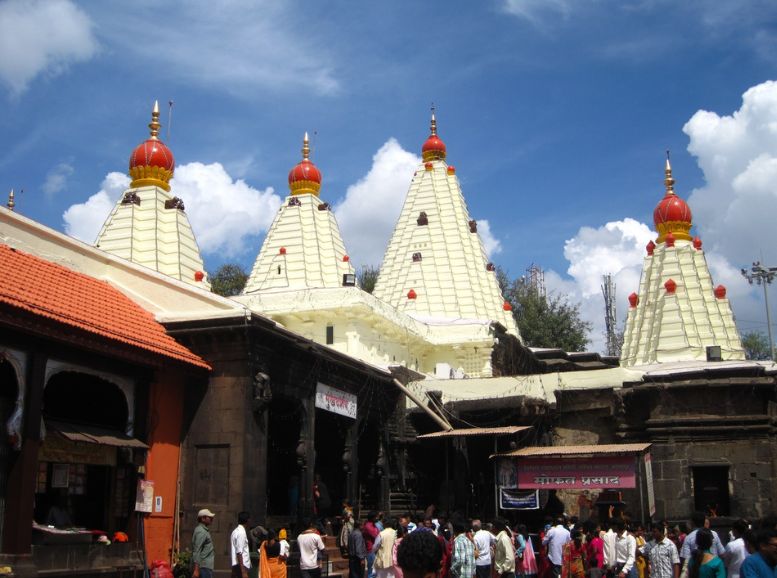
A radiant symbol of Kolhapur’s spiritual heritage, the Mahalaxmi Temple beckons devotees with its rich history and captivating beauty. Enshrined within is Goddess Mahalaxmi, the divine consort of Lord Vishnu, radiating an aura of peace and prosperity. Believed to be built in the 7th century and later adorned with architectural influences from the Chalukyan and Rashtrakuta eras, the temple itself is a testament to time.
Kolhapur Palace (New Palace):
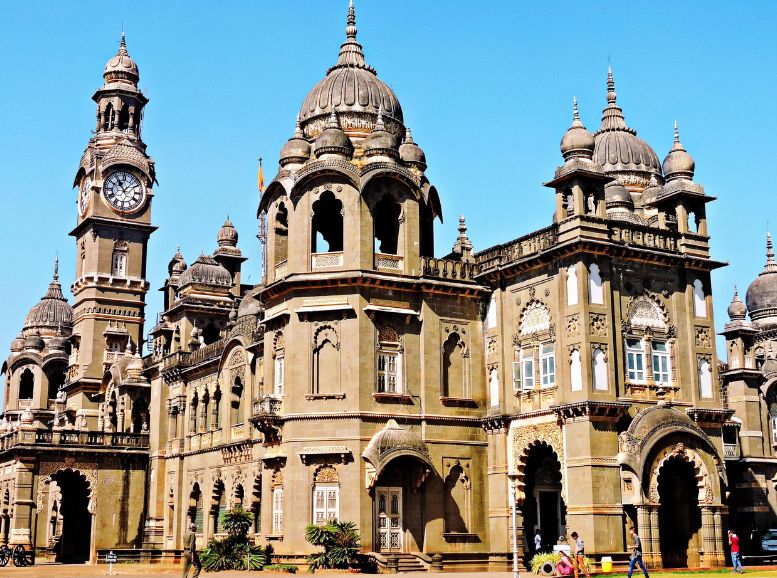
Kolhapur Palace, also known as the New Palace, stands as a majestic monument to the city’s royal heritage and architectural mastery. Built in the 19th century by Maharaja Shahu Chhatrapati of the Bhosale dynasty, it’s a captivating blend of Indo-Saracenic and Italianate styles, creating a visually stunning facade.
Step inside to discover a fascinating museum showcasing an impressive collection of artifacts. Marvel at weaponry, regal costumes, and even silver elephant saddles. An extensive array of hunting trophies offers a glimpse into the bygone era. The Durbar Hall, adorned with sparkling Belgian crystal chandeliers and intricately carved doors, transports you to the opulent world of the Kolhapur royals.
Rankala Lake:
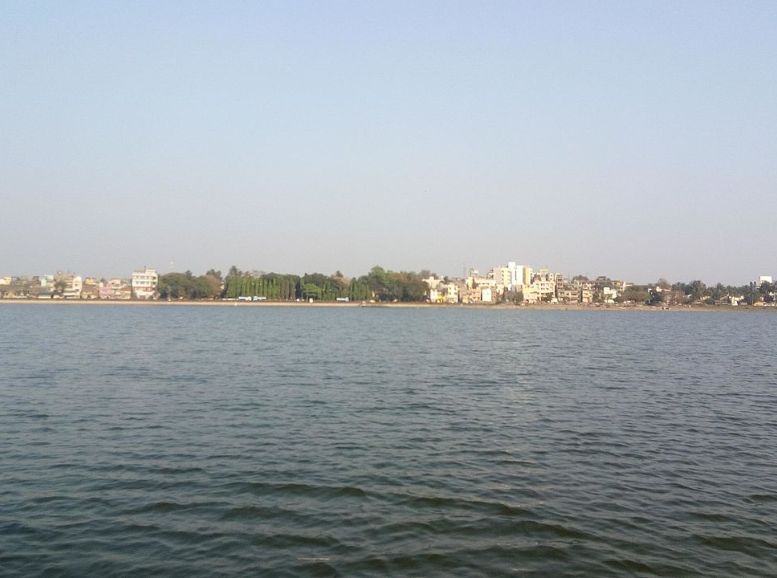
In the heart of Kolhapur, amidst the city’s vibrant energy, lies Rankala Lake, a haven of serenity. This picturesque waterbody boasts a surprising history – it was once a bustling stone quarry, transformed into a tranquil oasis during the reign of Chhatrapati Shahu Maharaj.
Lush greenery frames the lake, making it a popular spot for both locals and visitors seeking a break from the urban buzz. Take a leisurely stroll along the shore, or rent a boat to experience the calmness of the water from a different perspective. Rankala Lake is also a favorite picnic spot, perfect for spreading out a blanket and enjoying a meal with loved ones under the open sky.
Panhala Fort:
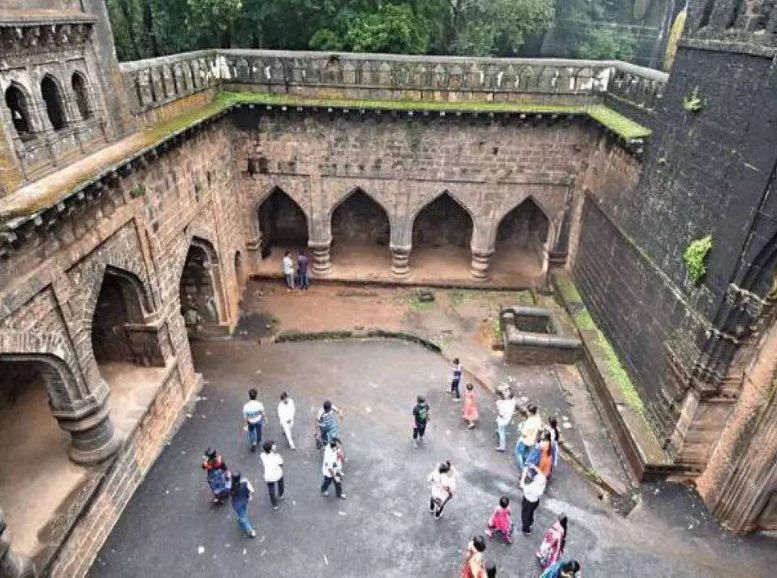
Roughly 20 kilometers northwest of Kolhapur, perched proudly atop a hill, lies Panhala Fort. This historic marvel whispers tales of valor and strategic brilliance, dating back to the 12th century. Witness to the rise and fall of dynasties like the Marathas and the Adil Shahi Sultanate, Panhala Fort boasts a sprawling complex teeming with stories.
Explore the Teen Darwaza (Three Gates), the grand entrance, and marvel at the architectural prowess of the Ambarkhana (Granary) – silent testaments to a bygone era. From the ramparts, panoramic vistas of the majestic Sahyadri mountains and the verdant plains below unfold, leaving you breathless.
Shalini Palace:
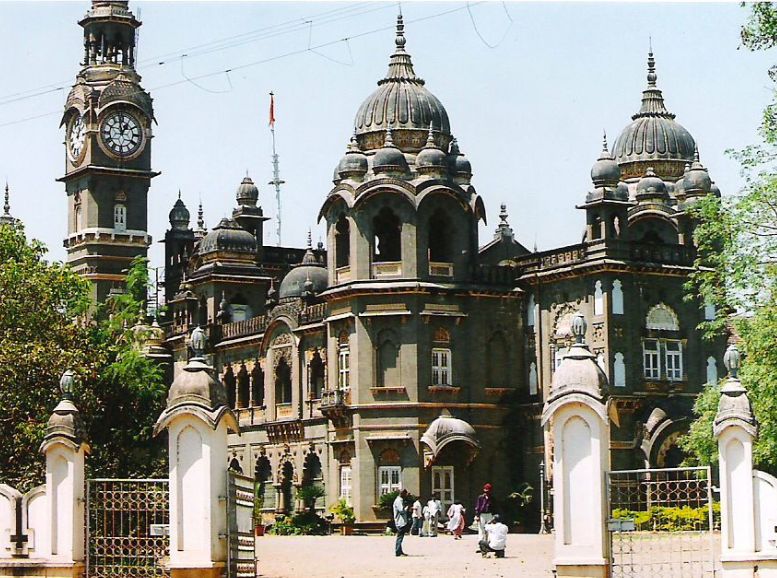
Once a majestic residence for Maharaja Shahu Chhatrapati, Shalini Palace now stands as a testament to Kolhapur’s royal heritage, transformed into a luxurious heritage hotel. This architectural gem blends Indian and European influences, its facade adorned with intricate carvings, ornate balconies, and grand archways that whisper of a bygone era.
Step inside and be transported to a world of opulence. The palace interiors are a treasure trove of royal artifacts, period furniture, and portraits of the Kolhapur dynasty, offering a glimpse into their regal lives.
Jyotiba Temple:
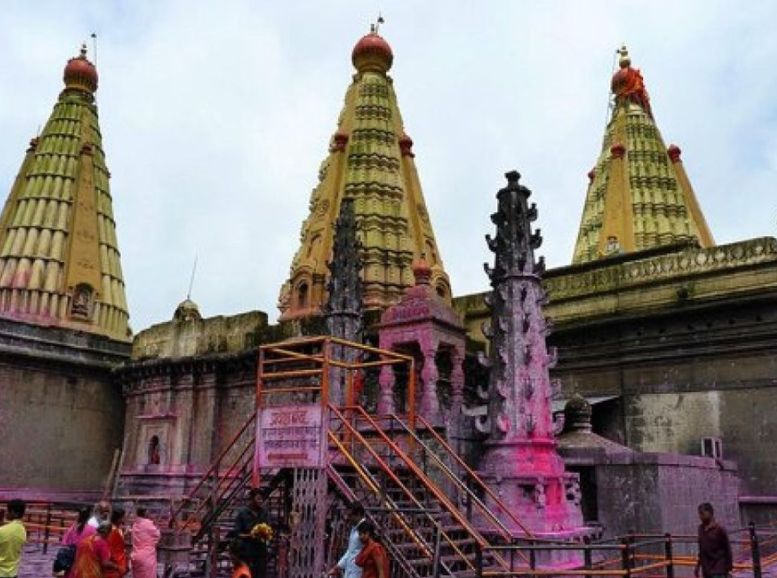
Shalini Palace, once the majestic residence of Maharaja Shahu Chhatrapati, now serves as a captivating reminder of Kolhapur’s royal heritage. Transformed into a luxurious heritage hotel, this architectural gem seamlessly blends Indian and European influences. Intricate carvings, ornate balconies, and grand archways adorn the facade, each whisper echoing stories of a bygone era.
Step inside and prepare to be transported. The opulent palace interiors transform into a treasure trove, brimming with royal artifacts, meticulously chosen period furniture, and portraits of the Kolhapur dynasty. These elements offer a captivating glimpse into the regal lives once lived within these very walls.
Siddhagiri Gramjivan Museum:
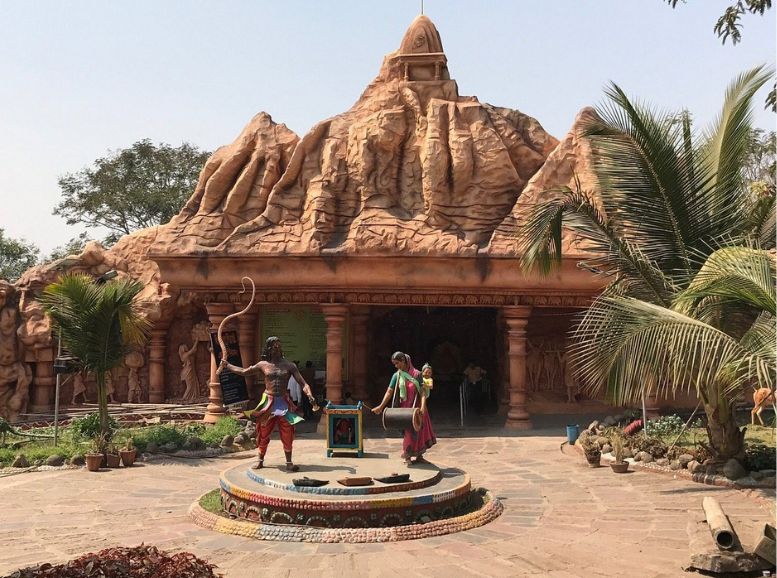
Nestled near Kolhapur, the Siddhagiri Gramjivan Museum offers a unique glimpse into the soul of rural Maharashtra. Unlike any other museum, this sprawling open-air institution brings the past to life with life-sized dioramas depicting scenes straight out of traditional villages. Witness agricultural practices in action, the intricate artistry of handicrafts, and vibrant cultural traditions unfold before you.
Delve deeper and explore exhibits dedicated to pottery, blacksmithing, carpentry, and the time-tested methods that sustained generations of farmers. Each section offers a window into Maharashtra’s rich rural heritage.
Local Experiences:
- Dive into the fiery flavors: Kolhapuri cuisine is a must-try. Savor iconic dishes like the spicy Kolhapuri Misal, the tangy Tambada Rassa, and the creamy Pandhara Rassa. From street stalls to local eateries, the city offers a delightful culinary journey.
- Maharashtrian Delights: Don’t miss the chance to grab authentic Maharashtrian snacks like the savory vada pav, the tangy bhel puri, and the light sabudana khichdi.
- Visions of Maharashtra: Immerse yourself in the vibrant folk arts of Maharashtra. Witness the captivating grace of Lavani dance or the lively energy of a Tamasha performance.
- A Shopper’s Paradise: Discover hidden treasures at local markets like Binkhambi Ganesh Mandir Bazaar and Shetkari Bazaar. Find unique handicrafts, dazzling jewelry, and stunning traditional sarees.
- Blessings at Mahalaxmi Temple: Seek solace and participate in rituals and prayers at the revered Mahalaxmi Temple, dedicated to the Goddess of Prosperity.
- Temples Unveiled: Explore other significant temples like the Jyotiba Temple perched atop Jyotiba Hill and the historic Kopeshwar Temple.
- A Regal Legacy: Witness the grandeur of the Kolhapur Palace (New Palace). Explore its fascinating museum, brimming with artifacts, weapons, and royal memorabilia that whisper tales of a bygone era.
- Panoramic Vistas: Ascend Panhala Fort, a historic marvel known for its strategic importance. Be mesmerized by breathtaking panoramic views of the majestic Sahyadri mountains.
- Tranquility by the Lake: Seek serenity with a peaceful boat ride or a leisurely stroll along scenic Rankala Lake, especially captivating during sunset.
- Gaganbawada’s Enchantment: Immerse yourself in the lush greenery and serene landscapes of Gaganbawada hill station. Explore cascading waterfalls and embark on adventurous treks through its scenic trails.
- A Cultural Extravaganza: Experience the vibrant atmosphere of festivals like Navaratri and the annual Jyotiba fair at Jyotiba Temple. Witness cultural events, music performances, and traditional celebrations that showcase the heart of Kolhapur.
Travel tips:
- Accommodation: Book hotels or heritage stays in advance, especially during peak seasons (summer, festivals) to secure your preferred option.
- Money Matters: While ATMs are available, carrying some cash is recommended as some shops might not accept cards.
- A Culinary Adventure: Be prepared for the fiery flavors of Kolhapuri cuisine! Sample iconic dishes like Misal Pav, Tambada Rassa, and Pandhara Rassa at local eateries.
- Packing Essentials: Pack according to the season. Opt for lightweight clothing for summers, layers for winters, and rain gear during the monsoon.
- Stay Alert: Exercise caution with valuables, especially in crowded areas and markets. Be aware of your surroundings.
- Communication: Marathi is the primary language, but basic phrases can be helpful. Hindi and English are also understood in tourist areas.
- Medical Preparedness: Locate nearby hospitals or clinics before your visit. Carry any necessary medications and travel insurance details.
- Respectful Exploration: Dress modestly and be mindful of local customs, especially in religious places. Seek permission before photographing people.
- Emergency Contacts: Keep local emergency numbers handy, including police, ambulance, and tourist helplines, for peace of mind.
Conclusion
Unveiling a tapestry of history, culture, and natural beauty, Kolhapur in Maharashtra promises an unforgettable adventure. Explore the sacred halls of the Mahalaxmi Temple, marvel at the regal opulence of the Kolhapur Palace, or delve into the history whispered by the ancient Panhala Fort. Tantalize your taste buds with the fiery Kolhapuri cuisine, find tranquility by the serene Rankala Lake, or immerse yourself in the vibrant energy of festivals like Navaratri. Hike through the picturesque Gaganbawada hills, wander through bustling markets, and discover the heart of Maharashtra. Let Xplro.com be your travel companion as you plan your perfect Kolhapur escape – discover hidden gems, explore must-see attractions, and delve deeper into the city’s rich heritage.
FAQs
What are the top attractions in Kolhapur?
- Key attractions include Mahalaxmi Temple, Kolhapur Palace (New Palace), Rankala Lake, Panhala Fort, Jyotiba Temple, Shalini Palace, Siddhagiri Gramjivan Museum, and Gaganbawada hill station.
What is Kolhapuri cuisine known for?
- Kolhapuri cuisine is renowned for its spicy and flavorful dishes such as Misal Pav, Tambada Rassa, Pandhara Rassa, and Kolhapuri Chicken, reflecting the region’s rich culinary heritage.
Which festivals are celebrated in Kolhapur?
- Major festivals in Kolhapur include Navaratri, celebrated with enthusiasm at Mahalaxmi Temple, and the annual Jyotiba fair at Jyotiba Temple, which draw devotees and tourists alike.
How can I explore Kolhapur’s local markets?
- Explore Binkhambi Ganesh Mandir Bazaar and Shetkari Bazaar for handicrafts, jewelry, and traditional Kolhapuri footwear like Kolhapuri chappals.
What outdoor activities can I enjoy in Kolhapur?
- Outdoor enthusiasts can indulge in boating and leisurely walks at Rankala Lake, trekking at Panhala Fort and Gaganbawada, and exploring nature trails and waterfalls in the surrounding hills.
Is Kolhapur safe for tourists?
- Kolhapur is generally safe for tourists. However, it is advisable to exercise caution with valuables and remain aware of surroundings, particularly in crowded areas and markets.
What are the accommodation options in Kolhapur?
- Kolhapur offers a variety of accommodation options including hotels, guesthouses, and heritage stays. It is recommended to book in advance, especially during peak tourist seasons and festivals.
Which languages are spoken in Kolhapur?
- Marathi is the primary language spoken in Kolhapur. Hindi and English are also understood in tourist areas and hotels.
What day trips can I take from Kolhapur?
- Nearby day trip options include visiting ancient temples like Kopeshwar Temple and enjoying a serene retreat at the hill station of Gaganbawada.
What should I pack for a trip to Kolhapur?
- Pack according to the season: lightweight clothing for summers, layers for winters, and rain gear for the monsoon season. Comfortable walking shoes are recommended for exploring historical sites and markets.





